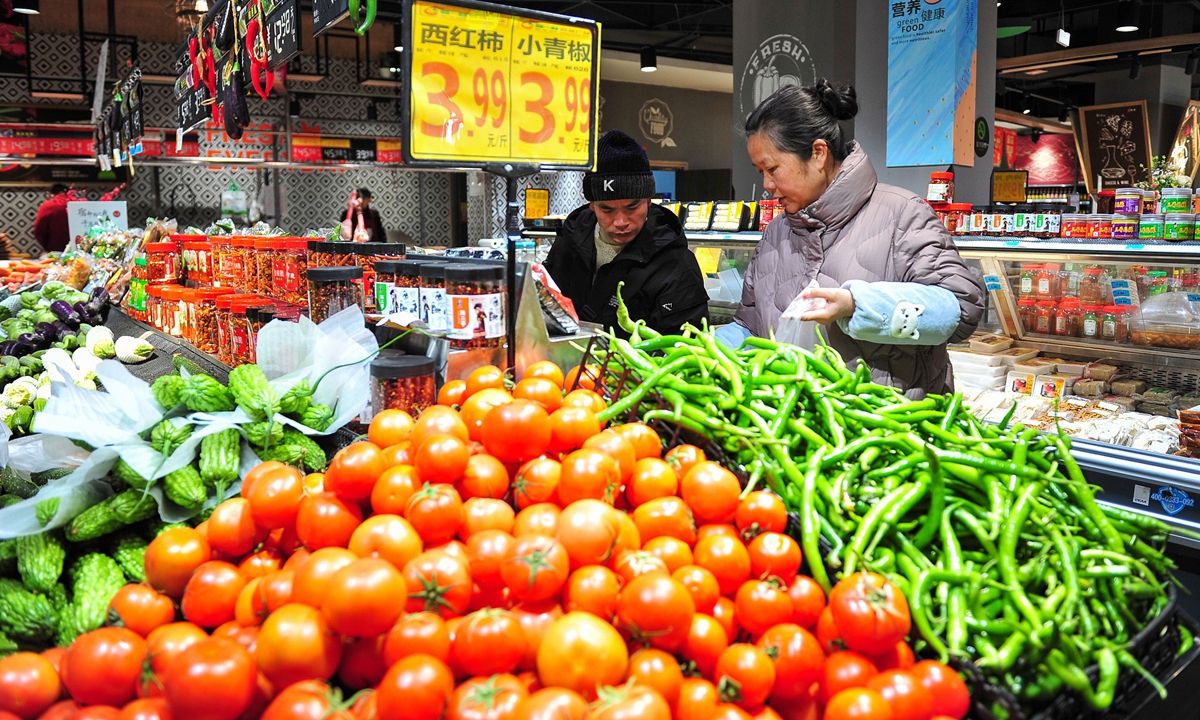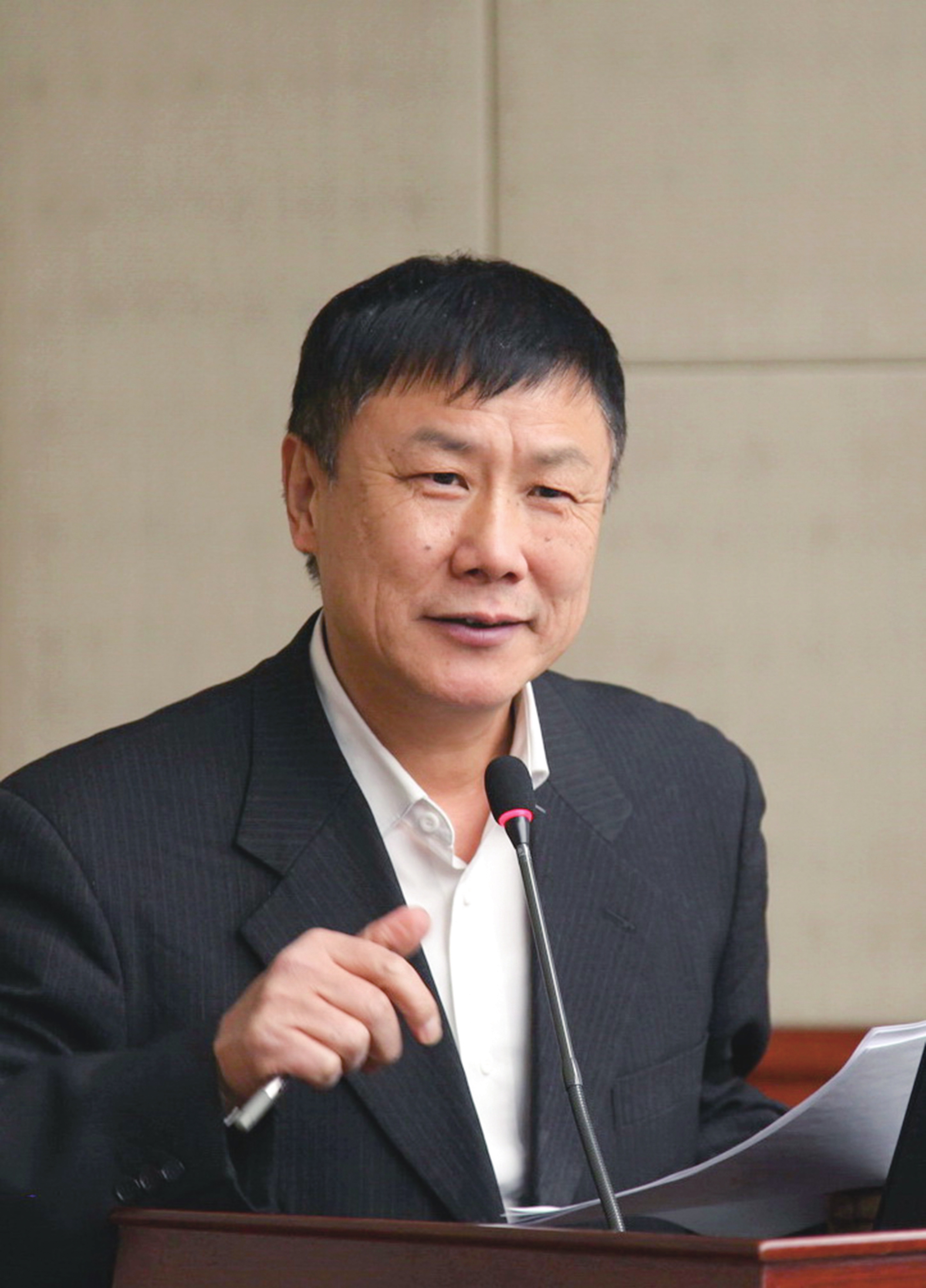
Photo: CFP
Some Western media and institutions have been constantly hyping the narrative that "China is experiencing deflation" in an attempt to undermine the Chinese economy and mislead the public. However, considering the actual situation of Western economies, the effectiveness of this smear campaign to mislead the public's cognition of the Chinese economy is likely to be diminished.
Many Western countries are currently facing stubborn inflation, for example, although the inflation rate in the US has fallen from a peak of 9.1 percent, it has risen again in March this year, with the Consumer Price Index (CPI) rising by 3.5 percent year-on-year, higher than the 3.2 percent in February.
It can be seen that the lingering impacts of the COVID-19 pandemic and the conflict between Russia and Ukraine have led to price surge in the US and Europe, with the ordinary consumers bearing the brunt. When consumers in the US and Europe learn that prices in the Chinese market remain stable, they will wonder how China achieved this. They may also question why their own countries are unable to do the same. And some politicians, media and institutions in the US and Europe, in order to distract consumers complains and questioning, had begun to hype the narrative of "China falling into deflation."
Deflation is undesirable, and China has set a target of 3 percent for controlling the inflation rate this year. The year-on-year GDP growth rate in the first quarter stood at 5.3 percent. The contribution of external demand was 14.5 percent. This indicates that global demand is increasing, with the world merchandise trade volume is expected to grow 2.6 percent this year.
On the other hand, China's exports of the "new three," cross-border e-commerce exports, and trade growth with neighboring regions remain strong. In the first quarter, industrial output increased by 6.1 percent year-on-year, with high-tech manufacturing sector registering a growth of 7.5 percent. In March, the manufacturing purchasing managers' index stood at 50.8 percent, while in January-February, industrial profits expanded by 10.2 percent year-on-year.
New quality productive forces focus on improving China's total factor productivity (TFP) growth, supporting high-quality economic development. In the first quarter, the contribution of consumption was 73.7 percent, and the contribution of investment was 11.8 percent. It is expected that the contribution of investment will increase in the remaining three quarters.
According to the calculations conducted by the National Development and Reform Commission, for every 1 percentage point increase in China's urbanization rate, it can drive approximately 1 trillion yuan of new investment demand and over 200 billion yuan of new consumption demand.
By promoting equipment trade-in in seven major areas including industry, agriculture, construction, transportation, education, cultural tourism and healthcare, it is expected to create a huge market with an annual scale of more than 5 trillion yuan.
Besides, the promoting of the trade-in of old consumer goods such as automobiles, home appliances, and home furnishings, is expected to unleash a market potential of trillions of yuan.
By promoting the comprehensive transformation of energy consumption control to carbon emissions, at least 2 trillion yuan of new investment is needed annually before 2030.
With these policy measures being implemented, China has confidence and determination to guarantee this year's economic growth target of around 5 percent, overcoming the lingering impact of the COVID-19 pandemic, bringing the economy return to a reasonable economic range, and enter a high-quality development track based on the development of new quality productive forces.
The central financial and economic-related meetings and this year's two sessions have clearly stated the target for the CPI. With the continued growth of the Chinese economy in the second, third, and fourth quarters of this year, restoring confidence and expectations, the "China falling into deflation" narrative will be self-defeating.
According to data released by the National Bureau of Statistics, the year-on-year CPI in the first quarter remained stable. Some institutions have predicted a lower CPI growth rate for China in 2024, but this forecast is made without considering the comprehensive policies that China will implement this year to address obstacles and issues facing high-quality development, and to achieve a balance between short, medium and long-term goals.
Looking at the overall trend of CPI for the year, insufficient demand remains the main issue in the current Chinese economy. If the country introduces corresponding measures to address issues such as insufficient demand, this year's CPI growth rate will certainly be higher than the external predictions.
For example, the initiative to promote the trade-in of old consumer goods not only has significant potential, but can also improve the efficiency of resource reallocation through a series of supporting policies.
From 2024 to 2027, China may experience a structural adjustment period similar to the one from 1998 to 2002. After four years of structural adjustment, the Chinese economy is likely to enter a new stage of high-quality development. The changes may not be obvious in the short term, but as time goes on, the changes will become apparent.
The author is chief researcher of China Center for International Economic Exchanges.
bizopinion@globaltimes.com.cn

Zhang Yansheng Photo: Courtesy of Zhang Yansheng





